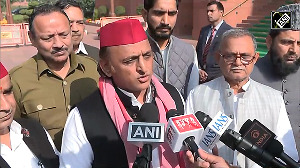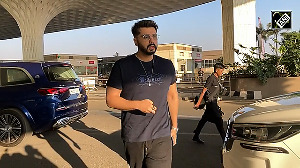Do you feel perennially exhausted?
 Do you sometimes experience breathlessness and palpitations?
Do you sometimes experience breathlessness and palpitations?
Does your skin turn pale often?
It could be due to iron deficiency, a common problem amongst the youth today.
Causes of iron deficiency
~ A low intake of iron rich foods.
~ Predominance of non-heme iron in the diet, an iron type that is not easily absorbed by the body. The other type is heme iron, which is easily absorbed.
~ The absence of iron absorption enhancing factors like vitamin C, meat, fish or poultry.
~ Prevalence of infections and worm infestations.
Types of dietary iron
~ Non-heme iron, which is the insoluble ferric form, is present in vegetable foods.
Rich sources of this form include rice flakes (poha), green leafy vegetables, sprouts, garden cress seeds or ahliva/ halim, dry fruits and jaggery.
Garden cress seeds, which are reddish brown in colour and resemble falooda seeds, are usually available at most provision stores. Soak a handful in a glass of milk for about 15 minutes and drink up the mixture.
The body can absorb only two to 20 percent of non-heme iron, but its absorption can be enhanced or decreased depending upon the food and drink had at the meal.
~ Heme iron, which is a soluble ferrous form of iron, is present in red meats, fish and poultry.
Milk is a poor source of iron, while egg contains a higher proportion of non-heme iron in the yolk.
On an average, about 15-35 percent of heme iron is absorbed by the body.
Enhance iron absorption
~ The presence of vitamin C rich foods at a meal enhances the absorption of non-heme iron; vitamin C converts the insoluble ferric iron into its soluble ferrous form, which can be easily absorbed.
These include guava, amla and citrus fruits like orange, sweet lemon, grapefruit and lime. Amla can be had as a pickle, murrabba or in its candied form.
~ The consumption of meat, fish or poultry has double benefits -- it provides heme iron as well as increases the absorption of non-heme iron.
~ Fermentation -- which takes place while making the idli-dosa batter -- and sprouting grains destroys some of the iron-inhibiting substances.
~ Raw or lightly steamed sprouts are also rich in vitamin C, which increases the absorption of iron.
Vegetarians versus non-vegetarians
Although vegetarian diets tend to be lower in iron than non-vegetarian diets, vegetarians do not have a greater risk of developing iron deficiency anaemia.
Breakfast bytes
~ Breakfasts could include a porridge of rice flakes, garden cress seeds or muesli (a popular readymade breakfast cereal that contains cereals, nuts and dry fruits).
~ A savoury preparation of rice flakes (masala poha) also works.
~ A vegetable sandwich made with green chutney (prepared from coriander leaves or mint leaves or curry leaves, coconut or groundnuts along with amla) and slices of tomato and cucumber has lots of iron.
~ Have a glass of citrus juice or a citrus fruit like orange or sweetlime.
Mealtimes
~ Your main meals should contain a green leafy vegetable every alternate day and a salad either at lunch or dinner.
~ Cauliflower leaves are much richer in iron as compared to other green leafy vegetables and should be consumed more often.
~ Eating an amla along with your meal or drinking a glass of fresh lime juice half an hour after the meal is beneficial, as it helps increase the absorption of iron.
~ Non-vegetarians should include fish in one meal, and meat or poultry as a garnish to a vegetable dish in the other.
Snack time
~ Iron rich snack choices include dates, figs (anjeer), jaggery based chikki or garden cress seeds or ahliva ladoos.
~ Tea and coffee contain tannins, which form insoluble complexes with iron, thereby preventing its absorption. Hence, they should not be drunk along with or immediately after a meal.
Practise these simple tips and you will feel just fit and fine.
Rohini Cardoso e Diniz is a consultant dietician with Naomi's Fitness Centre and manages a private practice in Goa.
Illustration: Dominic Xavier
DON'T MISS!





